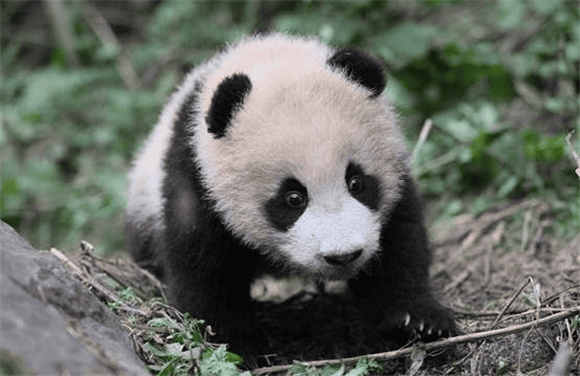The giant panda, this cute creature with black and white hair, has become a world-famous rare animal because of its unique appearance and docile personality. So, many netizens will be curious: How old is a giant panda? The answer is: 4 years old to 8 years old. This article will introduce in detail when giant pandas reach adulthood from multiple perspectives, as well as the signs of adulthood and the key periods in the growth process.

The average life span of giant pandas is about 20-30 years.
In natural environments, their lifespan is usually short, about 18-20 years. In captivity, with good care and medical care, their lifespans can reach 30 years or even longer.
Adult giant pandas can generally be finalized between the ages of 4 and 8, but at this stage, their growth and development are still continuing.
From a reproductive perspective, a female giant panda’s first estrus usually occurs between 4.5 and 6 years old, and male giant pandas become sexually mature between 5.5 and 7 years old. Therefore, giant pandas can be considered adults when they reach this age.
Critical periods in the growth process
The growth process of giant pandas can be divided into the following key periods:
1. From birth to 4 weeks: newborn period .
Newborn giant panda cubs are very fragile, weighing only 90-130 grams, and have only sparse white down on their bodies. During this stage, the pups rely primarily on their mother's care for feeding and warmth.
2. 4 weeks to 3 months: cub stage.
At this stage, the giant panda cub begins to grow black and white hair, forming its signature appearance. They begin to learn to move around and gradually explore their surroundings with their mother by their side.
3. 3 months to 1 year old: infancy.
At this time, the giant panda cub gained weight rapidly and was able to eat bamboo independently. They also imitate their mother's behavior, learning how to forage and survive. At this stage, they also begin to show an interest in interacting with other pups.
4. 1 to 4 years old: adolescence.
This is the fastest growing period for giant pandas. At this stage, not only do they develop significantly physically, but they also gradually develop mature social behaviors. They begin to learn to live independently, and in the process master key skills such as territorial demarcation, finding food, and dealing with natural enemies.
5. 4 years old to 8 years old: adulthood.
Giant pandas have reached sexual maturity at this stage and can begin to reproduce. The estrus cycle of female giant pandas usually occurs once every 1 to 2 years, and male giant pandas will begin to compete for mating rights during this period.
6. After 8 years old: mature period.
Giant pandas live a stable life at this stage, and their reproduction and survival skills are very mature. However, as they age, their fertility and vitality gradually diminish.
Marks of adulthood and sexual maturity

In addition to age, there are also some biological characteristics that can be used to determine whether a giant panda has reached adulthood.
For example, adult male giant pandas have relatively large heads and well-developed neck muscles, forming a distinct "hump". The physical differences between female giant pandas are relatively small, but there are significant changes in reproductive organs and mammary gland development.
Sexual maturity in giant pandas is usually associated with weight gain and slower growth rate. After reaching a certain weight, the growth rate of giant pandas will slow down, which may be a sign of adulthood. In addition, the degree of tooth wear of adult giant pandas is usually higher, which is related to their long-term feeding on bamboo.
The impact of living environment on growth
The growth rate of giant pandas is affected by the living environment.
In the wild, giant pandas face more challenges, such as finding food, dealing with natural enemies, and adapting to harsh climatic conditions. These pressures may lead to slower growth rates in wild giant pandas. In contrast, in captivity, giant pandas may grow faster due to adequate food and good medical care.
In addition, genetic factors and nutritional status may also affect the growth rate of giant pandas. Giant pandas in good health usually develop faster, while individuals with slower growth may take longer to reach adulthood.
Human protection and research on giant pandas
As China’s national treasure, giant pandas have received great attention and protection.
Since the 1980s, the Chinese government and international organizations have worked together to effectively save this endangered species through the protection of wild giant pandas and the implementation of artificial breeding projects.
In short, the adult stage of giant pandas is between 4 and 8 years old. Therefore, giant pandas can be considered adults when they reach this age group.
Conclusion: Do you like the good-looking giant panda?

 扫一扫微信交流
扫一扫微信交流
发布评论